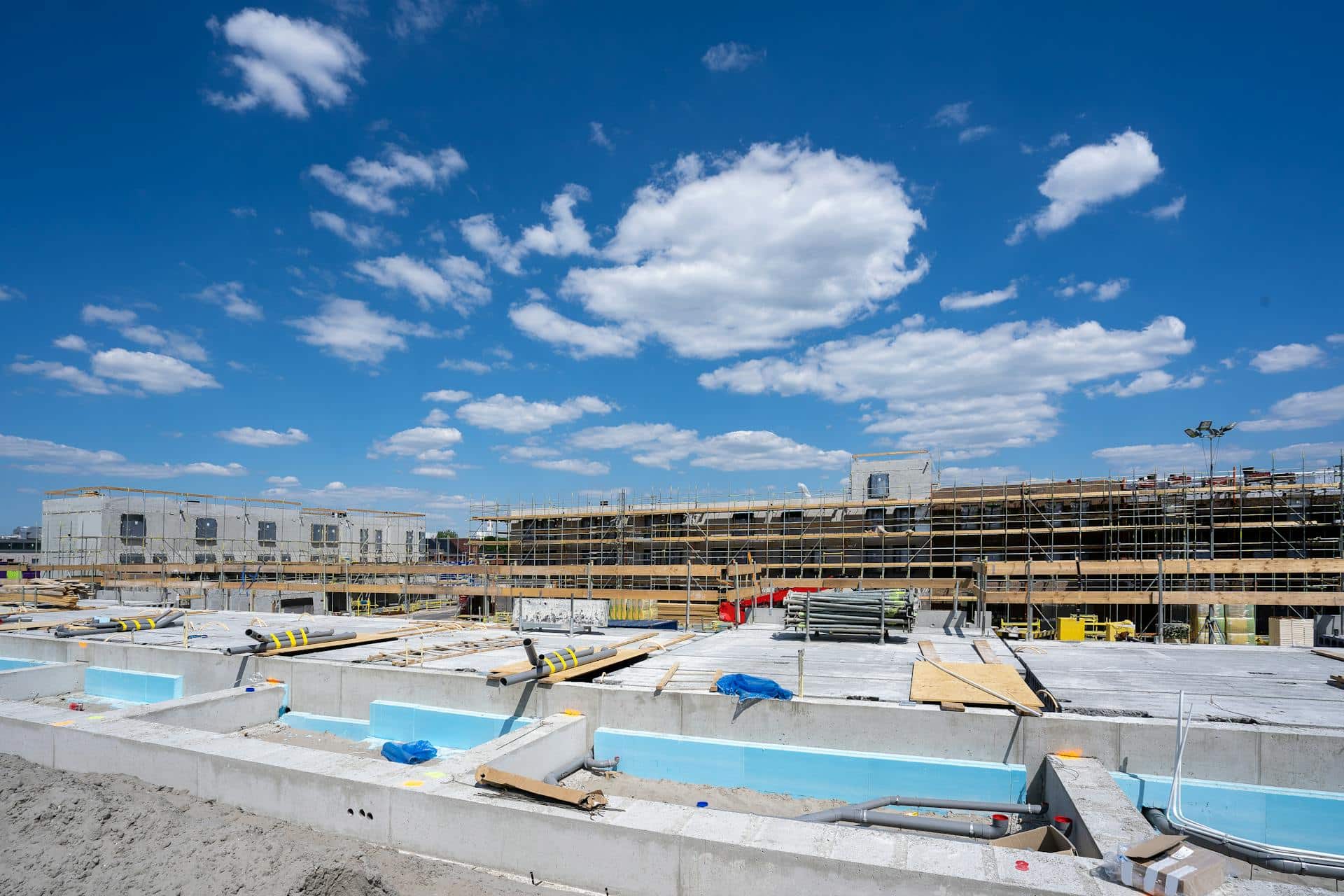Table of contents
Business lines of credit are essential for entrepreneurs in all sectors of our economy, but they’re especially important for those in the construction industry.
Most businesses in this sector perform a majority of their work during the spring and summer months, with the rest of the year acting as their “slow season.” Their annual revenue depends on their performance during these months, and any hiccup or unexpected downtime can be significantly costly for their bottom line.
With a business line of credit behind you, you can stop worrying about the nagging expenses that complicate your growth. You’ll have capital on an as-needed basis to help you forecast for your future, take advantage of new opportunities, and, most importantly, grow to your full potential.
Don’t worry; We’ve got you covered. Here’s everything you need to know about construction lines of credit and how to find the best deal for your specific circumstances in 2022.


What Is a Construction Line of Credit, and How Does It Work?
A construction line of credit provides borrowers with a set amount of capital to draw from as needed up to a certain limit. Interest applies to only the amount drawn, and borrowers can draw physical cash if needed. Unlike a traditional loan, where you receive a lump sum payment that you repay over a set period of time, a construction line of credit provides consistent access to capital. Borrowers draw funds when they need them and pay back the borrowed amount on their schedule. Basically, it provides you with short-term access to capital on an as-needed basis to use for almost any business expense. Business lines of credit are similar to business credit cards, but you can’t draw physical cash with a business credit card. Having both of these resources on hand increases your purchasing power and streamlines your cash flow significantly, so it’s a good idea to explore both of these options at some point over your business’s lifetime. Most credit lines are “revolving,” too, which means you can draw the same funds again once you pay off your existing balance. This schedule allows you to always have cash on hand at a moment’s notice.Real World Example
Let’s say you’re approached by an equipment supplier who offers you a significant discount on an asset needed to apply for higher revenue contracts. If this offer comes during your slow season, you might not have the capital on hand to afford the purchase and manage your expenses until you start working again, which can force you to pass up on the opportunity. You can only do this so many times until your competitors outpace you, but with a construction line of credit, you can take advantage of the discount AND cover your expenses.What Are the Benefits of a Construction Line of Credit?
Construction companies can significantly benefit from having a line of credit in their back pocket. Here are a few of the many benefits of a construction line of credit:- Cover expenses during construction delays
- On-demand working capital
- Manage cash flow during slow seasons
- Enhanced forecasting
- Ability to take advantage of opportunities
- Increased negotiation and purchasing power with suppliers
- Easier financial risk management
- Hire additional crew members
- Purchase necessary equipment
- Maintain/repair equipment quickly
When Should a Business Use a Construction Line of Credit?
The main reason why companies get a construction business line of credit is when they need to gain access to short-term funding and want to have the flexibility to do so as they need. Unlike other financing solutions, construction lines of credit allow borrowers to draw funds as needed and only pay interest on what they take. Here are a few situations where a business would use this type of financing.- Covering consistent expenses, like payroll and inventory
- Cost management, including fuel and other operating costs
- Supplementing income to increase purchasing power
- Equipment purchases
- Purchasing upfront materials for jobs
- Breaking down a large purchase over a more manageable schedule.
How Can I Use a Construction Line of Credit?
Entrepreneurs will typically use lines of credit to cover expenses while they focus on the bigger picture. For example, if you’re coming off your slow season and don’t have much capital on hand, you can leverage your business line of credit to purchase the materials and supplies needed to complete an upcoming contract and get the ball rolling again. You can use a construction line of credit for almost any business expense, but here are a few of the most common:- Payroll
- Inventory
- Up-front supplies
- Rent
- Utilities
- Vehicle maintenance/repairs
- Marketing initiatives
What Do You Need to Qualify for a Construction Line of Credit?
You can secure a construction line of credit from a variety of lenders, but the qualifications will differ depending on the organization you’re dealing with. Some lenders will require higher credit scores than the next, while others will prioritize your annual revenue over your time in business requirements. Here are National Business Capital’s minimum requirements for a construction line of credit:- 1+ Year in Business
- $500,000+ in Annual Revenue
- 600+ Credit Score
How to Apply for a Construction Line of Credit
Here are a few of the steps every entrepreneur should take when applying for a construction line of credit.- Review Your Business Financials – First and foremost, you’ll need to evaluate your business’s financials and determine a safe level of debt to take on. You should review your cash flow, consider each of your expenses, and forecast for any future challenges that can complicate your ability to repay financing.
- Research Lenders – Next, you’ll start researching lenders that align with your business goals. Take careful note of the qualifications, offered programs, and reputation of each lender, then create a list of 5-10 top options you can apply with.
- Prepare Your Documentation – The next step is to collect the required documents for the application process, including business bank statements, tax returns, proof of ownership, and many others. While the specific documentation differs from lender to lender, you’ll need to supply some basic information at the very least.
- Complete Applications – Finally, you’ll fill out applications with the lenders of your choice and wait for decisions. Generally, banks and credit unions take the longest to respond, while non-bank lenders can return a decision within a few hours.






